- What's a suture tray?
- What tools are needed for suturing?
- 12 suture tray setup and suture kit Instruments Used in Wound Management
- Suture materials are generally of the following two types:
- Needles are divided into two basic types:
- What are the 8 types of sutures?
- Types of non-absorbable sutures material
- Types of absorbable sutures
The aims of suturing a wound are clear and easy to manage. The first is to prevent infection from entering the wound. The second is to try to stop the wound from bleeding. The third is to have, a physically appealing scar as opposed to a disgusting mass of tissue. In this article, we will list the basic suture tray setup and suturing kit.
What's a suture tray?
The suture tray has the equipment required for a simple laceration to be handled. Your doctor uses sutures to stitch shut wounds or lacerations. Here Is a basic suture tray setup and suturing kit.
Your doctor uses sutures to close injuries on your skin or other tissues. They will use a needle attached to a length of "thread" to stitch the wound and close it.
What tools are needed for suturing?
A basic suture tray setup and suture kit include the following:
- A needle holder.
- Toothed forceps, with a hook to handle tissue.
- Fine suturing scissors.
- The appropriate suturing material.
It’s often necessary to know the suturing material been used during an operation. It will be very easy for you to choose the right material and other important factors like tensile and knot strength, handling of the wound, and tissue reactivity. Many case studies now concentrate on the cosmetic aspect of a wound's actual healing process rather than the risk of infection. This is because, in general, regardless of the process used, the rate of infection is low.
12 suture tray setup and suture kit Instruments Used in Wound Management
 Surgical Drapes:
Surgical Drapes:
The surgical drapes should be used to completely surround the wound and a portion of the surrounding sterile field.
 4" x 4" Gauze
4" x 4" Gauze
The gauze is used to clean the wound area.
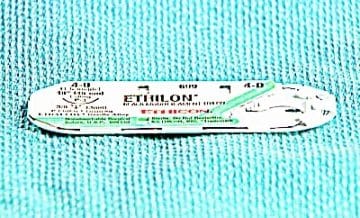 Suture Materials - 4.0 and 6.0
Suture Materials - 4.0 and 6.0
For facial wounds, a smaller gauge suture such as 6.0 is used. For wounds under greater stress and of less cosmetic importance such as a thigh laceration, a 4.0 suture would be appropriate.
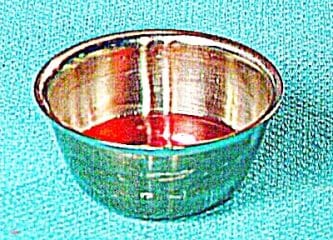 Antiseptic Solution and Saline
Antiseptic Solution and Saline
The antiseptic solution is for cleansing the skin around the wound and saline is used to cleanse and irrigate the wound itself.
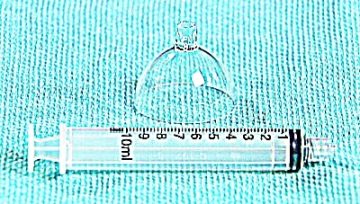 A syringe with splash cover
A syringe with splash cover
Wound irrigation has been shown to be the most effective means of removing debris and contaminants. The splash cover helps to avoid exposure to the patient's blood and body fluids.
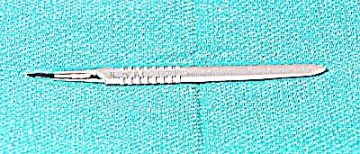 Scalpel
Scalpel
The operator may request a scalpel to allow a wound to be extended or wound edges to be debrided.
 Straight Hemostat
Straight Hemostat
The straight hemostat can be used for blunt dissection. It should not be used to clamp blood vessels or tissues since it will injure these structures.
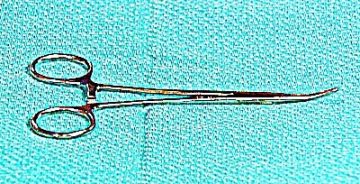 Curved Hemostat
Curved Hemostat
The curved hemostat can be used for blunt dissection. It should not be used to clamp blood vessels or tissues since it will injure these structures.
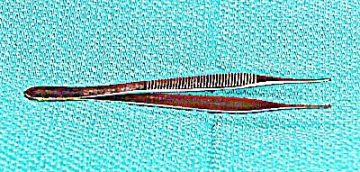 Toothed Forceps
Toothed Forceps
The toothed forceps are used to grasp the skin edges while suturing. They tend to be less traumatic than non-toothed forceps but can damage tissues if applied forcefully.
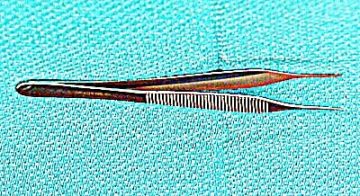 Non-toothed Forceps
Non-toothed Forceps
This is considered to be a more traumatic instrument than its toothed counterpart for grasping tissue.
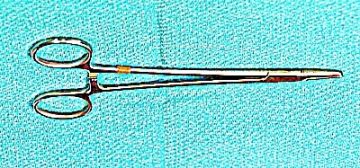 Needle Driver
Needle Driver
The needle driver is reinforced instrument designed to grasp the suture needle.
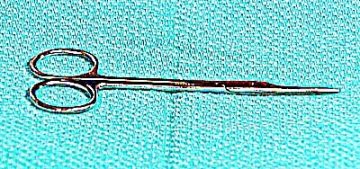 Scissors
Scissors
The scissors are intended only to cut sutures. They have no rule in the dissection or removal of tissue.
Suture materials are generally of the following two types:
- Absorbable – This type of material does not require removal. It is generally used for buried sutures. Absorbable sutures don’t require your doctor to remove them. This is because enzymes found in the tissues of your body naturally digest them.
- Non-absorbable – This type of material It is non-absorbable. It requires your doctor to remove them. They maintain the majority of tensile strength even after 2 months.
Needles are divided into two basic types:
- Cutting Needles – As their name implies, it is used to cut away tissue they are placed on and required little effort to pass the needle. They are generally used for skin’s surface.
- Non-cutting Needles – These are more rounded in the cross-section, and are used to push tissue to one side and to close it around the suture. It required great effort to use than the cutting needles. so they are generally used on organ repair and subcutaneous closure.
You can read more on the other tray setup instrument here.
What are the 8 types of sutures?
- Nylon.
- Polypropylene (Prolene).
- Silk.
- Polyester (Ethibond).
- Gut.
- Polydioxanone (PDS).
- Poliglecaprone (MONOCRYL).
- Polyglactin (Vicryl).
Types of non-absorbable sutures material
Here is an example of non-absorbable sutures listed below. These types of sutures are used to repair soft tissue including cardiovascular and neurological procedures.
- Nylon. A natural monofilament suture.
- Polypropylene (Prolene). A synthetic monofilament suture.
- Silk. A braided natural suture.
- Polyester (Ethibond). A braided synthetic suture.
Types of absorbable sutures
- Gut. This natural monofilament suture is used for repairing internal soft tissue wounds or lacerations. It is not often used for cardiovascular or neurological procedures.
- Polydioxanone (PDS). This synthetic monofilament suture is used for soft tissue wound repair including abdominal closures and for pediatric cardiac procedures.
- Poliglecaprone (MONOCRYL). This synthetic monofilament suture is used for general use in soft tissue repair. It is not used for cardiovascular or neurological procedures.
- Polyglactin (Vicryl). This synthetic braided suture is used for repairing hand or facial lacerations. It shouldn’t be used for cardiovascular or neurological procedures.
RELATED READING
- Dental Amalgam tray set-up (Silver-Colored Dental Fillings)
- DENTAL TRAY SET-UP FOR CROWN PREP INSTRUMENTS
- 10 Basic Prophylaxis Tray Setup
- Dental Instruments And Their Uses
- 31 Basic Normal Delivery Instrument Sets and their uses
- 8 Oral Hygiene Tips for Healthy, White Teeth
- 7 Reasons Why Dental Cleanings Are Essential for Better Health
- Dental care tips you can start using today
CREDIT SOURCES
- Suture tray.
https://elentra.healthsci.queensu.ca/assets/modules/basic_suturing/index.html - Medical Suturing Skills: Suture materials.
https://www.theapprenticedoctor.com/category/medical-suturing-skills/
